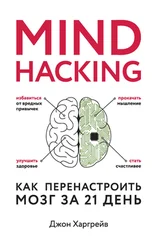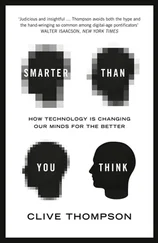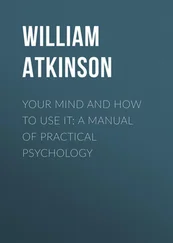Welcome to mind hacking.
Hacker: “A person who enjoys learning the details of programming systems and how to stretch their capabilities, as opposed to most users who prefer to learn only the minimum necessary.”
—The Hacker’s Dictionary 1
One of the greatest moments in computer history occurred, as it so often does, in an ordinary office cubicle.
Steve Wozniak was working late. After clocking out of his day job at Hewlett-Packard, he would often stay into the night to work on a secret side project. It was the mid-1970s, and he and his buddy Steve Jobs had recently been inspired by a demonstration of the Altair 8800, a build-it-yourself computer kit aimed at hobbyists. They had the radical idea that they could offer a similar computer already built . The user would still need to add a keyboard, video display, and a case—but the motherboard would be fully assembled and ready to crunch.
That computer, which would later be known as the Apple I, was the project that Wozniak was working on whenever he could find a spare moment. To finance their invention, Wozniak had sold his beloved HP-65 calculator, and Jobs his treasured Volkswagen Bus. Of the two, Wozniak was the technical genius, so into the night he toiled, long after his coworkers had gone home, in pursuit of this groundbreaking computer.
One night he hooked up a keyboard and a video display to his prototype, and something amazing happened: it worked .
“I typed a few keys on the keyboard and I was shocked!” he remembered. “The letters were displayed on the screen. It was the first time in history anyone had typed a character on a keyboard and seen it show up on their computer’s screen right in front of them.” 2Today, we’re surrounded by screens, so it is difficult to capture what must have felt like magic to Wozniak. It was like opening a portal to another dimension, discovering an entire world that we had the power to manipulate .
I sometimes still have that same sense of wonder and excitement when I’m using computers, even while doing something as ordinary as typing this paragraph. How is it that I can punch a cluster of plastic keys and have these words show up on a glowing screen? How can I speak into a phone and instantly have access to the complete store of human knowledge? How can I swipe my finger and launch a ham into orbit?
For the first time in history, we humans live in two worlds: the physical world of objects, and the digital world of websites, apps, and video games. We may still call the physical world “the real world,” but that’s just a figure of speech: the digital world is no less “real” than the physical world, just different.
Similarly, our mental world is no less “real” than the physical world, just different. Computers have given us an excellent model for thinking about the mind. Our thoughts are like bits: they’re transient, ephemeral, invisible. And with some basic tools, they can be manipulated to do new and amazing things, an epiphany like Woz had in his cubicle all those years ago.
Mind hacking is like hooking up a keyboard to your head.
The Early Hackers
“Most of our generation scorned computers as the embodiment of centralized control. But a tiny contingent—later called hackers—embraced computers and set about transforming them into tools of liberation. That turned out to be the true royal road to the future.”
—Stewart Brand, writer and hacker 3
If you were a computer user in the 1970s, there’s a good chance you were a hacker.
Hackers flourished on the campuses of schools like MIT and Stanford as well as hundreds of defense contracting companies and research laboratories around the world. They were as obsessed with learning as they were unconcerned with hygiene. Hackers were often solitary creatures, typing with pizza-stained fingers at unfathomable speeds.
They might have been lonely, but they weren’t alone. In the early days, hackers communicated through a high-speed global network known as ARPANET, an early precursor to the Internet. This strange new medium let them exchange ideas, information, jargon, and jokes; it was a creative, collaborative community of like-minded geeks.
“Hacking” was a badge of honor. It meant you not only loved technology, you understood how to use it to innovate and explore. You could write new programs by manipulating lines of obscure code; you could build your own motherboard; you could make a computer do something no one had imagined before.
As their numbers grew, hackers became a tribe, complete with their own language, values, and humor. As the tribe grew, so did its power. ARPANET eventually became the Internet, which transformed every aspect of modern life: education, government, finance, sex, even our view of the world. After the smoke clears, historians will agree the Digital Revolution made the Renaissance look like a picnic lunch.
And it was all started by hackers.
Today, a similar revolution is beginning, one that takes place not on keyboards and screens but entirely in your mind. Like the Digital Revolution, which couldn’t be “seen” but was profound in its impact, this revolution is a silent meteorite hurtling toward Earth, a massive shift in human thinking. Just as the early hackers overturned the world with technology, mind hackers are overturning the world of thought .
Principle #1: Mind Hacking Is Free
“To be a hacker, one had to accept the philosophy that writing a software program was only the beginning. Improvinga program was the true test of a hacker’s skills.”
—Sam Williams, Free as in Freedom: Richard Stallman’s Crusade for Free Software 4
If there is one man in the world who does not get enough credit for his contribution to society, it is Richard Stallman.
Stallman deserves to be up there with Charles Babbage and Alan Turing and all those other stars in the geek constellation. A complex and controversial character, Richard Stallman has influenced your life and the technologies that you use, in profound ways.
And the thing that set Stallman off on his history-altering crusade was a printer jam .
In 1977, Stallman was a programmer at MIT’s Artificial Intelligence Lab. Whenever he wanted to print a document from his workstation, he had to send the print job to the shared printer, which was located on another floor. After trudging up the stairs, Stallman would often find the printer was jammed, stuck in the middle of someone else’s fifty-page print job. He’d clear out the paper jam, then babysit the machine until it jammed again. This would happen over and over, and then the printer would run out of paper.
The brilliant twenty-seven-year-old had recently graduated from Harvard, where he had quickly become a fixture in the hacker community. As he stood over the printer, stewing over another paper jam, he began to approach the problem like a hacker. He couldn’t keep the printer from jamming, but he could motivate his coworkers to clear the jams.
Rushing back to his desk, he cracked open the source code of the printer program and came up with a brilliant hack. Who would be the most motivated to clear out a paper jam? Someone waiting to print a document . So whenever the printer jammed, he instructed the central computer to send out this alert to everyone waiting for something to print:
> The printer is jammed, please fix it.
By sending the alert to people with waiting print jobs, he crowdsourced the solution (before that was even a word). The solution was simple and elegant, and it worked . . . until the day the new printer arrived.
The new laser printer was donated by Xerox’s PARC lab, the research and development unit responsible for world-changing innovations like the graphical user interface, Ethernet, and the personal computer. But in this case Xerox made one world-changing mistake: they refused to release the source code to the printer program . This meant Stallman couldn’t reprogram it. Now, when the inevitable paper jams occurred, Stallman was back to banging his head on the printer, his blood slowly boiling as each excruciatingly slow (but laser-crisp) page was excreted from the printer.
Читать дальше
![Джон Харгрейв Mind Hacking [How to Change Your Mind for Good in 21 Days] обложка книги](/books/404192/dzhon-hargrejv-mind-hacking-how-to-change-your-min-cover.webp)











